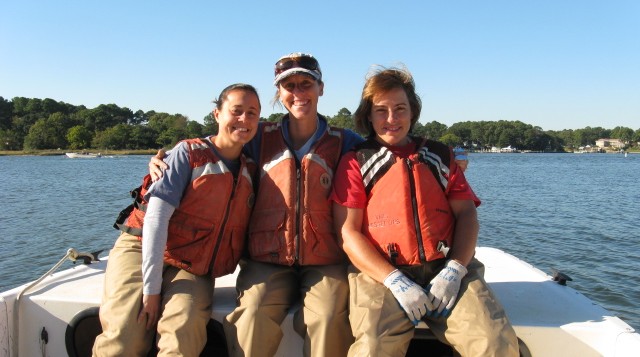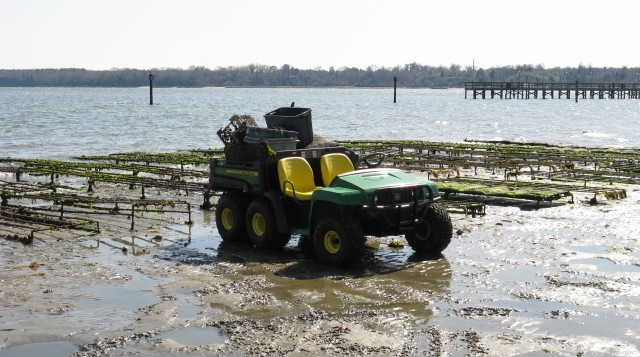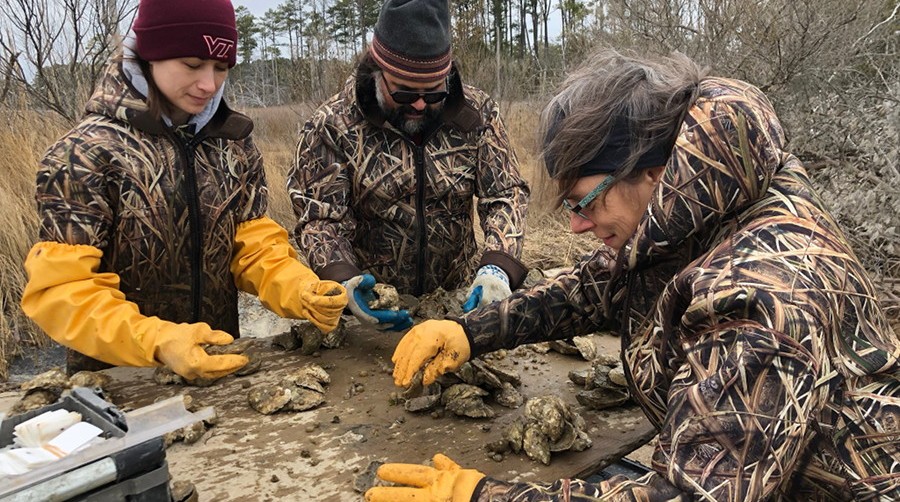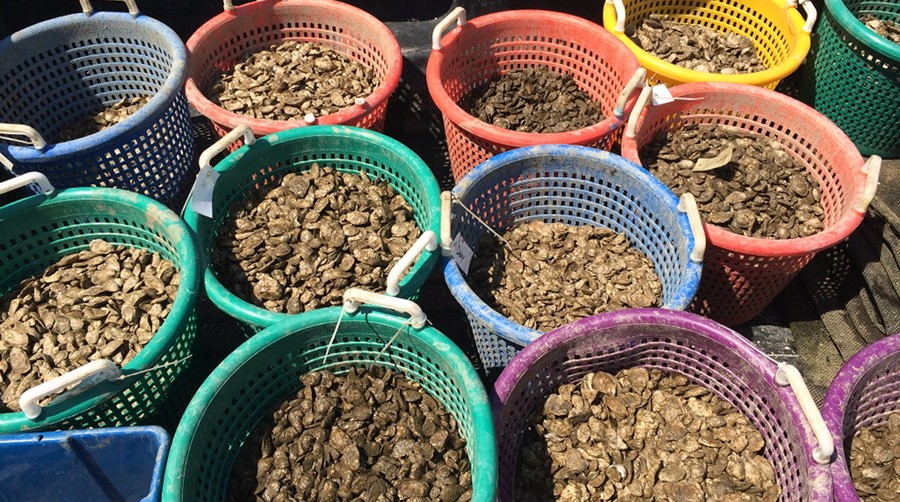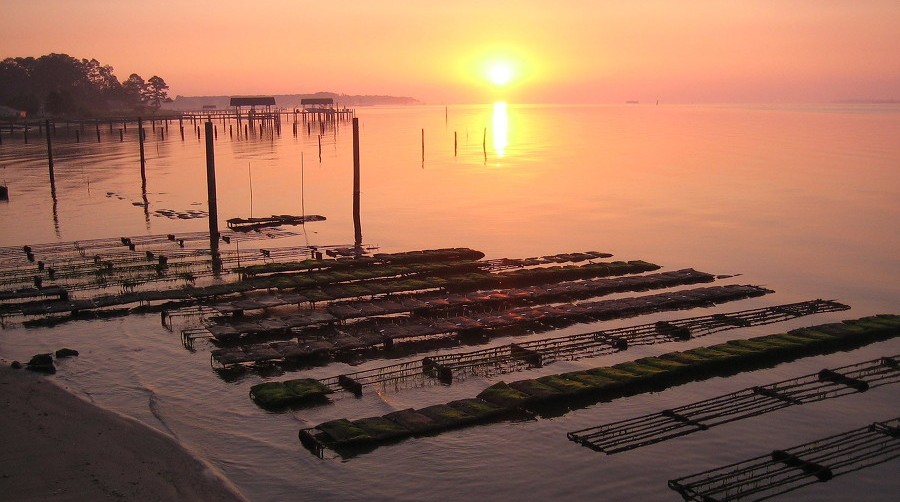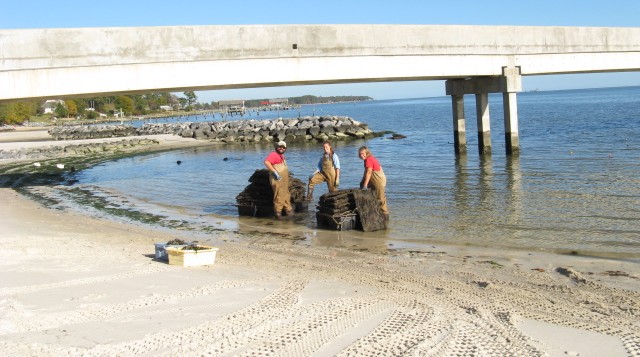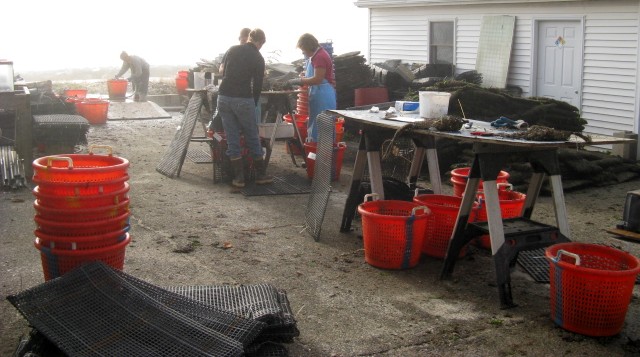Field Operations
ABC’s field capabilities consist of oyster grow-out in four main farm sites using a variety of methods: rack-and-bag, bottom cages, and longline basket systems. A central field lab on the VIMS main campus supports the majority of our sampling, deployment, and distribution activities.
The farm sites, located on the York, Rappahannock, Coan, and Choptank rivers, are each staged in intertidal to subtidal zones. The field sites on the Coan and Rappahannock are on private oyster ground; industry partners have granted ABC access for holding broodstock and conducting experiments.
Farm SitesThe York River farm is located near the VIMS campus and is used for disease-challenge tests under conditions of moderate salinity and high disease prevalence and is also used as an easily-accessible location for archive material. This site employs all three of ABC’s grow-out methods, with bottom cages and racks in breakwater pools, and a large longline system installed in an adjacent area just offshore of Watermen’s Hall. The Rappahannock River farm is ABC’s primary broodstock holding site. Its moderate salinity, protected location, and lower disease pressure make it a great site to grow seed and hold the majority of ABC’s spawning and distribution stocks. Tetraploid seed and broodstock are also concentrated at this site, where they benefit from its stable conditions. Bottom cages and racks are spread throughout this site in highly organized groups, each located in the ideal spot for their specific purpose. The Lewisetta farm on the Coan River is one of ABC’s lower salinity sites. It serves as a deployment site for low-salinity seed each year, a test site for the family breeding program, and a holding site for some of ABC’s low salinity line broodstock. Bottom cages and racks run in long rows on this site, parallel to the shoreline. ABC’s second low salinity site is located on the Choptank River at the Horn Point Lab in Cambridge, Maryland. ABC helped install a second longline system at this location, which is used by scientists from both research groups. ABC uses a portion of this longline space as another low-salinity test site for their family breeding program. The extreme low-salinity conditions that can occur at this site also make it an informative location for experimental work. VIMS also possesses a pier and adjacent property on Sarah's Creek, a branch of the York River. There, the primary gear type are Taylor floats and the site is used for temporary holding of oysters as well as a place to naturally condition oysters. Due to the low streamflow, this site is particularly nutrient rich and warm, making it an ideal location for oyster conditioning. |
Field LabABC’s field lab is the central location for field gear storage (wet suits, waders, boots, gloves, life jackets) and is where processing of brood stock, experimental sampling and much of the “dirty work” occurs. Outside the field lab are all kinds of gear needed for growing oysters including oyster bags with various sizes of mesh, bands for affixing bags to racks, rope, wood, floats and sometimes oyster cages.
|


